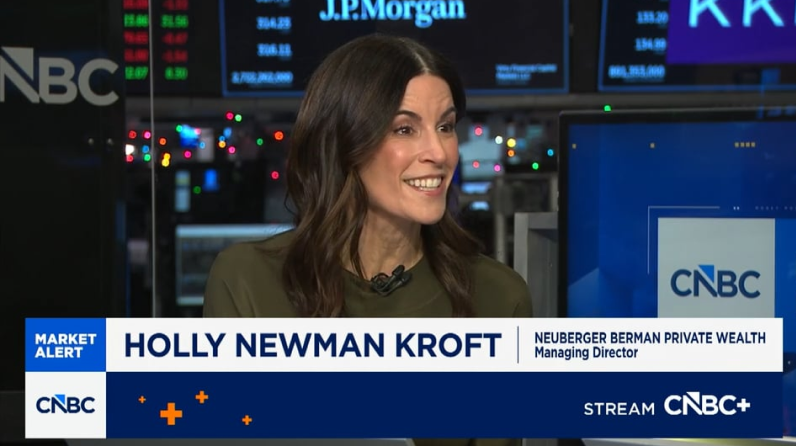

The decision was primarily driven by the Committee judging that slower job gains and higher unemployment outweighed inflation concerns, prompting a more accommodative policy stance.
Fed Chair Jerome Powell’s speech at Jackson Hole, coupled with continued deceleration in the U.S. labor market combined over the last several weeks, significantly raised the probability of a Fed cut coming into today’s meeting. Therefore, the Federal Open Market Committee’s (“FOMC”) decision to cut the fed funds target rate by 25 basis points to 4.0% to 4.25% was no real surprise, and one could argue that the bigger question was how many FOMC voters would have preferred more. The answer it turns out was just one – the newly sworn-in Stephen Miran – while both Michelle Bowman and Christopher Waller, who had dissented in favor of a cut in July, went with the majority in the September meeting.
The statement released following the meeting acknowledged the key driver of the decision: “the shift in the balance of risks.” While acknowledging that “inflation has moved up and remains somewhat elevated,” it was the slower job gains, the move higher in unemployment, and, perhaps most importantly, the judgment that “downside risks to employment have risen” that spurred the FOMC into action.
Changes in the dot plot reflect not only today’s interest cut, but a more accelerated pace moving through 2028. For this year, the dot plot reflects two additional cuts from here, translating to 3.6% by the end of 2025; estimates for the fed funds rate at the end of 2026 and 2027 are 3.4% and 3.1%, respectively. While the expectations for 2025 appear firmly centered around 3.6% with only one meaningful outlier, there is much wider dispersion as one looks out to 2026 and 2027. The implication is that there is still significant uncertainty in the path for both the labor market and inflation, and it will likely be a continued push and pull as each side of the inflation-employment tug of war fights for prominence in the narrative over the next several months.
Interestingly, the quarterly update of economic projections painted a rosier view than the projections released in June. The Fed is now projecting that the US economy will grow by +1.6% in 2025 and +1.8% in 2026, versus June’s projections of +1.4% and +1.6%, respectively. Core PCE is expected to close this year at +3.1% –in line with June’s release – and +2.6% in 2026, slightly higher than last quarter. Perhaps most importantly, the Fed maintained its estimate for the unemployment rate to close the year at 4.5% and to fall modestly in 2026 to 4.4% – hardly cause for significant concern.
During the press conference, Fed Chair Powell emphasized the importance of the dual mandate and admitted that the potential risk of a more protracted deceleration in the U.S. labor market was the rationale for the move towards a more accommodative stance. When attempting to square the increase in growth expectations with the rate cut, Powell admitted that today’s move could be described as a “risk management” cut, which appeared to rankle equity investors who had pushed prices higher immediately following the release of the Fed’s statement. In terms of inflation, Powell continues to lean into the thesis that the goods inflation evident in recent prints is likely to be one-time in nature, and with the low hiring, low firing labor dynamic, wage inflation should remain subdued. Finally, any attempts to engage Powell on the political pressure the Fed is under, the potential conflict represented by Stephen Miran’s dual employment, or a potential probe of the Fed as teased by Treasury Secretary Scott Bessent were swiftly and effectively dispensed with by the Chair with essentially no comment.
In short, today’s announcement was as predicted but perhaps shines a bit of a brighter light on what to expect as we move closer to 2026. Policy uncertainty remains an overhang, and while there are some FOMC voters that appear ready and willing to lean in hard on the labor market, the lack of any real momentum behind a 50 basis point cut supports the view that the Fed remains both independent and cognizant of the challenges another round of structural inflation could bring. Markets were mixed on the news, with U.S. small cap and cyclical equities higher following the press conference; volatility and the NASDAQ were both lower in late session trading. Short yields moved lower, while longer maturities were incrementally higher – likely reflecting longer-term inflation and growth expectations.


VIDEO
Holly Newman Kroft Featured on CNBC’s Money Movers December 18

VIDEO
The Kantor Group | Charles Kantor’s Year-End Reflections and Key Questions as We Head Into 2026

INSIGHTS
CIO Notebook: Dual Release of Delayed Non-Farm Payrolls Likely Supports Another Cut

INSIGHTS
Using Tax-Free Gifts for Wealth Transfer

INSIGHTS
CIO Notebook: Powell Plays the Middle as Fed Cuts Rates

MARKET COMMENTARY
Giving Thanks for Market Strength

INSIGHTS
CIO Notebook: September U.S. Non-Farm Payrolls Further Complicate the Narrative
VIDEO
Holly Newman Kroft Featured on CNBC’s Money Movers November 18
VIDEO
Plan for Peace of Mind with Our Estate Planning Organizer
MARKET COMMENTARY
Some Tricks, More Treats
INSIGHTS
CIO Notebook: Markets Rattled as Fed Leans Hawkish
REPLAY
Private Wealth Investment Outlook 4Q25
INSIGHTS
CIO Notebook: September Core CPI Comes in Late but Light
IMPORTANT INFORMATION:
This material is provided for informational purposes only and nothing herein constitutes investment, legal, accounting or tax advice, or a recommendation to buy, sell or hold a security. This material is general in nature and is not directed to any category of investors and should not be regarded as individualized, a recommendation, investment advice or a suggestion to engage in or refrain from any investment-related course of action. Any views or opinions expressed may not reflect those of the firm as a whole. Neuberger Berman products and services may not be available in all jurisdictions or to all client types. Diversification does not guarantee profit or protect against loss in declining markets. Investing entails risks, including possible loss of principal. Investments in private equity are speculative and involve a higher degree of risk than more traditional investments. Investments in private equity are intended for sophisticated investors only. Unless otherwise indicated, returns shown reflect reinvestment of dividends and distributions. Indexes are unmanaged and are not available for direct investment. Investing entails risks, including possible loss of principal. Past performance is no guarantee of future results.
Portfolio positioning views expressed herein are those of Neuberger Berman’s Private Wealth Investment Group, which may include those of the Neuberger Berman’s Asset Allocation Committee. Asset allocation and positioning views are based on a hypothetical reference portfolio. The Private Wealth Investment Group analyzes market and economic indicators to develop asset allocation strategies. The Private Wealth Investment Group works in partnership with the Office of the CIO. The Private Wealth Investment Group also consults regularly with portfolio managers and investment officers across the firm. The Asset Allocation Committee is comprised of professionals across multiple disciplines, including equity and fixed income strategists and portfolio managers. The Asset Allocation Committee reviews and sets long-term asset allocation models, establishes preferred near-term tactical asset class allocations and, upon request, reviews asset allocations for large, diversified mandates. Asset Allocation Committee members are polled on asset classes and the positional views are representative of an Asset Allocation Committee consensus. The views of the Asset Allocation Committee and the Private Wealth Investment Group may not reflect the views of the firm as a whole and Neuberger Berman advisers and portfolio managers may take contrary positions to the views of the Asset Allocation Committee or the Private Wealth Investment Group. The Asset Allocation Committee and the Private Wealth Investment Group views do not constitute a prediction or projection of future events or future market behavior. Defensive positioning generally means an underweight bias on allocations to risk assets such as equities and alternatives. Positioning views may change over time without notice and actual client positioning may vary significantly. Discussion of yield characteristics or total returns of different asset classes are for illustrative purposes only. Such asset classes, such as equities and fixed income, may have significantly different overall risk-return characteristics which should be consider before investing.
The information in this material may contain projections, market outlooks or other forward-looking statements regarding future events, including economic, asset class and market outlooks or expectations, and is only current as of the date indicated. There is no assurance that such events, outlook and expectations will be achieved, and actual results may be significantly different than that shown here. The duration and characteristics of past market/economic cycles and market behavior, including any bull/bear markets, is no indication of the duration and characteristics of any current or future be market/economic cycles or behavior. Information on historical observations about asset or sub-asset classes is not intended to represent or predict future events. Historical trends do not imply, forecast or guarantee future results. Information is based on current views and market conditions, which will fluctuate and may be superseded by subsequent market events or for other reasons.
Discussions of any specific sectors and companies are for informational purposes only. This material is not intended as a formal research report and should not be relied upon as a basis for making an investment decision. The firm, its employees and advisory accounts may hold positions of any companies discussed. Nothing herein constitutes a recommendation to buy, sell or hold a security. It should not be assumed that any investments in securities, companies, sectors or markets identified and described were or will be profitable. Investment decisions and the appropriateness of this content should be made based on an investor's individual objectives and circumstances and in consultation with his or her advisors.
Neuberger Berman Investment Advisers LLC is a registered investment adviser.
The “Neuberger Berman” name and logo are registered service marks of Neuberger Berman Group LLC.